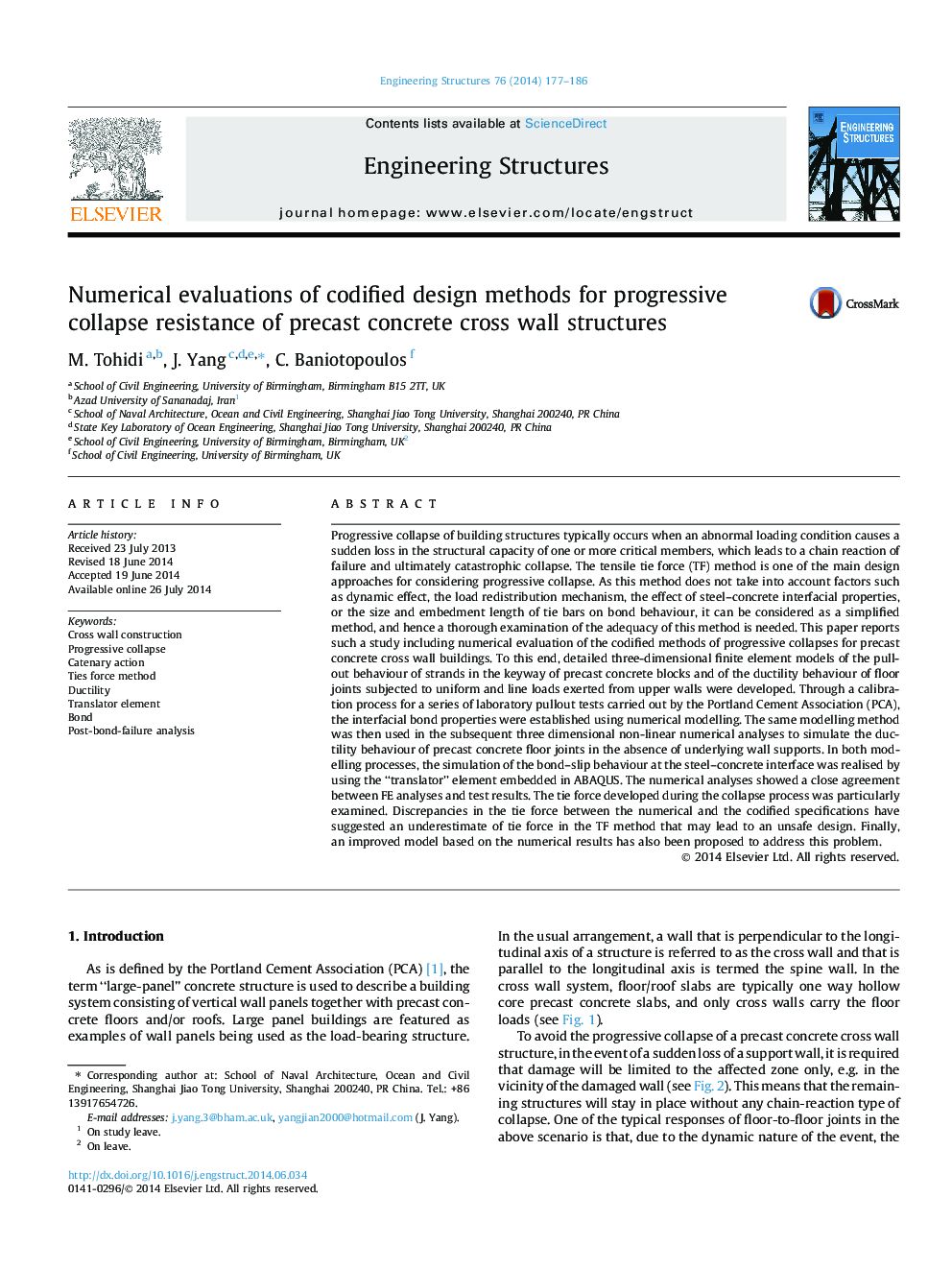| کد مقاله | کد نشریه | سال انتشار | مقاله انگلیسی | نسخه تمام متن |
|---|---|---|---|---|
| 266591 | 504369 | 2014 | 10 صفحه PDF | دانلود رایگان |
• The effect of tie designs on the progressive collapse performance of PC cross wall buildings has been evaluated.
• Numerical models were developed to analyse the interfacial behaviour of strand/grout in the full loading history.
• The bond behaviour of ties governs the development of centenary mechanism required for sustaining the progressive collapse.
• It is the ductility rather than the tie strength that should be considered in the progressive collapse design.
• It has been found that the conventional tie force method renders an unsafe design for progressive collapse.
Progressive collapse of building structures typically occurs when an abnormal loading condition causes a sudden loss in the structural capacity of one or more critical members, which leads to a chain reaction of failure and ultimately catastrophic collapse. The tensile tie force (TF) method is one of the main design approaches for considering progressive collapse. As this method does not take into account factors such as dynamic effect, the load redistribution mechanism, the effect of steel–concrete interfacial properties, or the size and embedment length of tie bars on bond behaviour, it can be considered as a simplified method, and hence a thorough examination of the adequacy of this method is needed. This paper reports such a study including numerical evaluation of the codified methods of progressive collapses for precast concrete cross wall buildings. To this end, detailed three-dimensional finite element models of the pullout behaviour of strands in the keyway of precast concrete blocks and of the ductility behaviour of floor joints subjected to uniform and line loads exerted from upper walls were developed. Through a calibration process for a series of laboratory pullout tests carried out by the Portland Cement Association (PCA), the interfacial bond properties were established using numerical modelling. The same modelling method was then used in the subsequent three dimensional non-linear numerical analyses to simulate the ductility behaviour of precast concrete floor joints in the absence of underlying wall supports. In both modelling processes, the simulation of the bond–slip behaviour at the steel–concrete interface was realised by using the “translator” element embedded in ABAQUS. The numerical analyses showed a close agreement between FE analyses and test results. The tie force developed during the collapse process was particularly examined. Discrepancies in the tie force between the numerical and the codified specifications have suggested an underestimate of tie force in the TF method that may lead to an unsafe design. Finally, an improved model based on the numerical results has also been proposed to address this problem.
Journal: Engineering Structures - Volume 76, 1 October 2014, Pages 177–186
